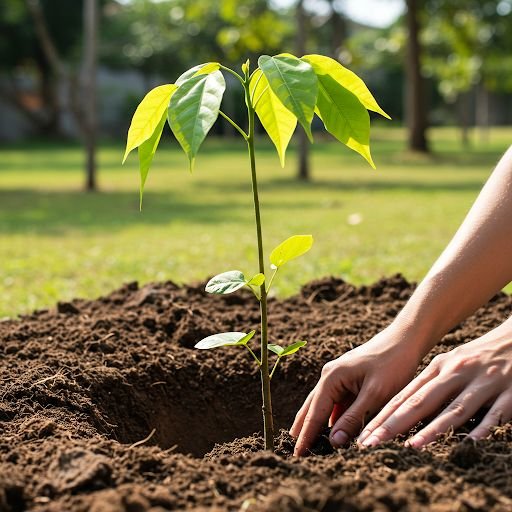Our Blogs
Blogs
/
Blog Details
Good Plantation Practices for Productive and Profitable Farmlands
Comments
No Comments
Author
Gireesh Reddy
Post Date
July 30, 2025

"Explore the significance of digital marketing in today’s business landscape and discover effective strategies and powerful tools to enhance your online presence & engage your target audience."
- Adamson Janny
“Plantation is a vital step in turning farmland into a sustainable and income-generating asset. Good plantation practices not only improve crop health and yield but also protect the environment, conserve water, and enhance soil fertility.
Whether you’re cultivating fruit orchards, timber trees, or medicinal plants, proper planning and scientific methods are key to success. At Hindustani Developers, we help farmers implement high-quality plantation systems backed by years of experience”.
Good Plantation
Farmland plantation in India, Fruit tree farming, Sustainable farming practices, Drip irrigation in plantation, Tree spacing for orchards, Best trees for farm income

🌿 Benefits of Good Plantation in Farmlands
Good plantation practices offer multiple advantages for sustainable and profitable farming. Firstly, plantations help improve soil quality as the organic matter from trees enhances soil fertility and structure. This results in healthier soil that supports better crop growth. Secondly, plantations contribute to better water management. Deep-rooted plants, along with mulching techniques, help retain soil moisture and reduce water wastage, especially when used with drip irrigation systems.
Another major benefit is that plantations increase yield and profit. Using quality plants and a well-designed drip irrigation setup ensures higher productivity and healthier plants, ultimately improving farmers’ income. Additionally, plantations reduce erosion and pollution. They protect the land from wind and water erosion, while also supporting biodiversity by providing natural habitats and acting as filters for pollutants. Lastly, a well-planned plantation generates long-term income, especially when fruit trees and timber crops like teak or sandalwood are planted. These continue to yield returns for many years, offering financial stability to the landowner.
1. Soil Testing & Land Preparation
Test the soil for pH, nutrients, and salinity. Clear unwanted vegetation, level the land, and apply compost to enrich the soil for healthy root development.
2. Choosing the Right Plants
Select crops based on soil type, climate, and market demand.
Examples:Fruits: Mango, Pomegranate, Guava, Avocado, Lemon,Etc,.
Timber: Teak, Red Sandalwood
Medicinal: Lemon Grass, Tulsi
3. Drip Irrigation Integration
Install a drip irrigation system to deliver water and nutrients directly to plant roots. This saves up to 70% water and improves overall plant growth and yield.
4. Spacing and Layout Planning
Use a grid layout with proper spacing (e.g., Mango – 7×7 meters) to allow sunlight, airflow, and ease of maintenance like pruning or harvesting.
📞 Ready to Transform Your Farmland?
Contact Hindustani Developers today to plan your dream plantation. Whether you’re a new landowner or experienced farmer, our expert team will help you grow profitably and sustainably.
📍Hyderabad | Amaravati| Andhra Pradesh| Telangana|
📱 9505223124
🌐 www.hindustaniirrigation.com
Related Blogs
Good Fencing Solutions for Productive and Profitable Farmlands
Our Blogs Blogs / Blog Details Fencing Solutions
Proven Strategies for Effective Digital Marketing Success Today
Achieve Immediate Results with Proven Marketing Strategies

